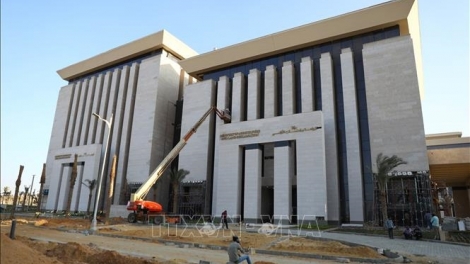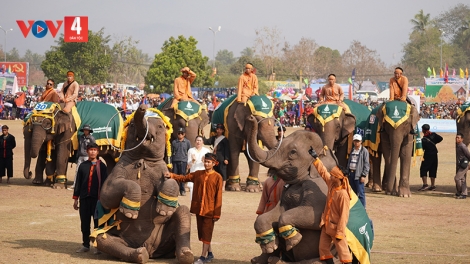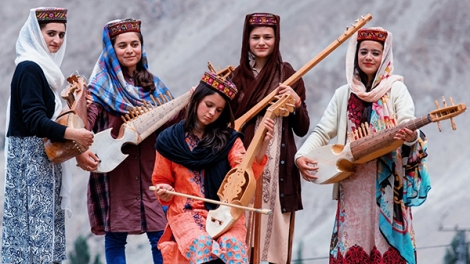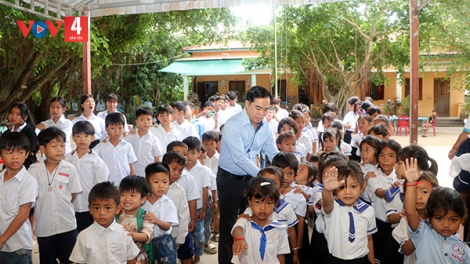Cultural dances play a huge role in African societies. These dance forms are used to teach moral values, social etiquette and to help people mature and celebrate members of the community while celebrating festivals and other occasions.
African dances are largely participatory and every ritual dance often have a time when spectators must participate.
Here are a couple of examples of some amazing traditional dances from different countries in Africa.
Indlamu (South Africa)
Cultural dances play a huge role in African societies. These dance forms are used to teach moral values, social etiquette and to help people mature and celebrate members of the community while celebrating festivals and other occasions.
African dances are largely participatory and every ritual dance often have a time when spectators must participate.
Here are a couple of examples of some amazing traditional dances from different countries in Africa.
A dance that is mostly associated with Zulu culture. It is derived from the Zulu warrior class of ancient times. It is carried out by men in full regalia; traditional head pieces, ceremonial belts, shields and spears.
Kpanlogo
© Seasons Travels
A very popular f©orm of dance that started from the highlife scene in the capital city of Accra but is now enjoyed throughout the country.
Moribayasa (Guinea)
© Ashley Hyde & Mikayla Timothy
From the Malinke people in Guinea, this dance is done by women who have overcome great adversity. The woman starts the dance wearing old ragged clothes. Accompanied by musicians she circles the village several times, singing and dancing. The women of the village follow her and sing too. The woman then changes her clothes and buries her old clothes in a special area.
Eskista (Ethiopia)
© Stephen Scourfield
Eskista is a traditional Ethiopian dance performed by both men and women. The dance focuses on rolling the shoulder blades, bouncing the shoulders, and contracting the chest. It is one of the most complex traditional dance forms in Ethiopia due to its technical nature.
Atilogwu ( Nigeria)
© Face2Face Africa
Also known as the 'Acrobatic Dance' of Eastern Nigeria. The leaps, turns, jumps and intricate footwork of the dancers is certainly a sight to behold. The dance is usually performed at key events & ceremonies.
Aduma (Kenya)
john Willis
This is one of the most famous traditional dances of the Massa performed during Eunoto, the coming of age ceremony of warriors. It is also know as the '"jumping dance" with each of the young warriors trying to jump higher then the previous one. Members of the group may raise the pitch of their voices based on how high one jumps.
Pat Pat (Senegal)
The Pat Pat dance is the traditional dance practiced by the Jola people of Senegal. It involves rhythmically patting the body and fast leg movements.
San Dancing (Botswana)
© Marcy Mendelson / Cheetah-Watch.com
The San tribe of Botswana are one of the oldest tribes in Africa. The San style of dancing is one that involves fast movement, singing and complexities of rhythms that can be found in many of the dances of the Africa diaspora.
Ewegh ( Niger)
euters
The Ewegh dance is a dance form performed by the nomadic Tuareg tribe of North Africa. The Ewegh is strong dance performed by men in groups during festivals and ceremonial events.
Brazil has the biggest black African diaspora outside of Africa. Now, when it comes to children’s media there is very little reflection of this fact. As we are based in Nigeria we didn’t really have any idea just how bad the situation was. That is until we were approached by several English speaking Brazilian fans of Bino & Fino asking if there was a Portuguese version of the show.
2015 was a really awesome year. We discovered some really great things that are helping to nurture young minds. After a lot of thinking we've compiled our favorite 5 posts of 2015.
Cultural dances play a huge role in African societies. These dance forms are used to teach moral values, social etiquette and to help people mature and celebrate members of the community while celebrating festivals and other occasions.
Here is a neat list of stores that do African themed greeting cards for you to check out.
A dance that is mostly associated with Zulu culture. It is derived from the Zulu warrior class of ancient times. It is carried out by men in full regalia; traditional head pieces, ceremonial belts, shields and spears.
Kpanlogo
© Seasons Travels
A very popular f©orm of dance that started from the highlife scene in the capital city of Accra but is now enjoyed throughout the country.
Moribayasa (Guinea)
© Ashley Hyde & Mikayla Timothy
From the Malinke people in Guinea, this dance is done by women who have overcome great adversity. The woman starts the dance wearing old ragged clothes. Accompanied by musicians she circles the village several times, singing and dancing. The women of the village follow her and sing too. The woman then changes her clothes and buries her old clothes in a special area.
Eskista (Ethiopia)
© Stephen Scourfield
Eskista is a traditional Ethiopian dance performed by both men and women. The dance focuses on rolling the shoulder blades, bouncing the shoulders, and contracting the chest. It is one of the most complex traditional dance forms in Ethiopia due to its technical nature.
Atilogwu ( Nigeria)
© Face2Face Africa
Also known as the 'Acrobatic Dance' of Eastern Nigeria. The leaps, turns, jumps and intricate footwork of the dancers is certainly a sight to behold. The dance is usually performed at key events & ceremonies.
Aduma (Kenya)
© john Willis
This is one of the most famous traditional dances of the Massa performed during Eunoto, the coming of age ceremony of warriors. It is also know as the '"jumping dance" with each of the young warriors trying to jump higher then the previous one. Members of the group may raise the pitch of their voices based on how high one jumps.
Pat Pat (Senegal)
The Pat Pat dance is the traditional dance practiced by the Jola people of Senegal. It involves rhythmically patting the body and fast leg movements.
San Dancing (Botswana)
© Marcy Mendelson / Cheetah-Watch.com
The San tribe of Botswana are one of the oldest tribes in Africa. The San style of dancing is one that involves fast movement, singing and complexities of rhythms that can be found in many of the dances of the Africa diaspora.
Ewegh ( Niger)
©Reuters
The Ewegh dance is a dance form performed by the nomadic Tuareg tribe of North Africa. The Ewegh is strong dance performed by men in groups during festivals and ceremonial events.
Brazil has the biggest black African diaspora outside of Africa. Now, when it comes to children’s media there is very little reflection of this fact. As we are based in Nigeria we didn’t really have any idea just how bad the situation was. That is until we were approached by several English speaking Brazilian fans of Bino & Fino asking if there was a Portuguese version of the show.
2015 was a really awesome year. We discovered some really great things that are helping to nurture young minds. After a lot of thinking we've compiled our favorite 5 posts of 2015.
Cultural dances play a huge role in African societies. These dance forms are used to teach moral values, social etiquette and to help people mature and celebrate members of the community while celebrating festivals and other occasions.
Here is a neat list of stores that do African themed greeting cards for you to check out.
Learn how to say hello in these African languages.






